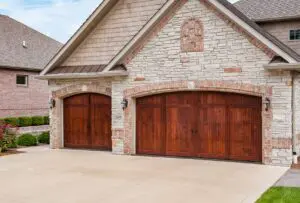
How Much Does Garage Door Repair Cost in 2025?
Tired of holding the garage door button just to get it to open or close? Learn the common causes, easy DIY fixes, and when to call Welborn Garage for expert help.
Choosing the perfect garage door opener is about more than just opening and closing your garage door; it’s about convenience, security, and enhancing your home’s overall functionality. With so many different types, features, and brands available, finding the right one can seem overwhelming.
In the early 20th century, garages were not as common as they are today. The rare homeowners who did have garages had to rely on simple, hinged doors that required physical strength to operate. These doors were typically made from solid wood, which made them heavy and difficult to maneuver. Homeowners had to lift the doors by hand, often without any assistance from mechanical components.
The type of garage door opener you choose significantly affects your overall satisfaction. Each type has its own pros and cons, so it’s essential to understand which will best suit your needs:
These are the most common and affordable type of garage door openers, known for their strength and reliability. Chain-driven openers use a metal chain to lift and lower the door, making them highly durable. However, they are also the noisiest option, which can be disruptive, especially if your garage is attached to your home or located beneath a living space. If you’re on a budget and noise isn’t a significant concern, a chain-driven opener could be a great choice.
For those who prioritize quiet operation, belt-driven openers are an excellent option. Instead of a chain, these models use a rubber belt, which makes them significantly quieter and smoother. This type of opener is ideal for attached garages where noise levels matter, though it typically comes at a higher price than chain-driven models. Belt-driven openers offer similar strength and reliability but with less maintenance and noise.
These openers use a threaded steel rod to lift and lower the garage door. Screw-driven models have fewer moving parts, which means less maintenance is required. They are also efficient and reliable, offering a good balance between cost and performance. However, they can be sensitive to temperature changes, causing them to be noisier in cold climates or require adjustments in extreme weather conditions.
Jackshaft openers are mounted on the wall beside the garage door rather than overhead, saving valuable ceiling space. They operate quietly and are ideal for garages with high or obstructed ceilings, such as those with storage racks or beams. Jackshaft openers are more advanced and typically more expensive, making them a premium choice for those who want the latest technology and convenience.
The motor is the heart of any garage door opener, and choosing between AC (alternating current) and DC (direct current) motors can impact your opener’s performance:
In the early 20th century, garages were not as common as they are today. The rare homeowners who did have garages had to rely on simple, hinged doors that required physical strength to operate. These doors were typically made from solid wood, which made them heavy and difficult to maneuver. Homeowners had to lift the doors by hand, often without any assistance from mechanical components.
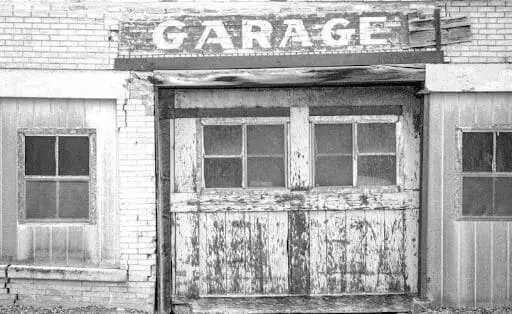
The first significant breakthrough came in 1926 when C.G. Johnson, the founder of the Overhead Door Corporation, invented the first overhead garage door. This revolutionary design allowed the door to lift vertically and slide parallel to the garage ceiling, drastically reducing the amount of effort needed to open and close it. The overhead door design quickly gained popularity, particularly because it conserved space and was much more convenient than traditional swing-out doors.

In the 1950s, a new wave of innovation arrived: remote-controlled garage door openers. These openers used basic radio transmitters, allowing homeowners to open their garage doors without leaving their cars. As more homes were being built with attached garages, this development gained rapid popularity. Now, people could stay dry during bad weather or avoid the hassle of manually opening heavy doors.
The 1960s and 1970s marked a significant shift toward radio-controlled garage door openers becoming a household staple. These openers used basic radio frequencies to transmit signals from a small handheld device to a receiver connected to the garage door opener. This innovation brought tremendous convenience to the average homeowner, but it also introduced a new security risk.
Early garage door openers operated on fixed radio frequencies, meaning that any remote with the same frequency could open the door. This posed a problem for homeowners as the risk of someone else using a matching transmitter to access their garage became a reality.
To address this, manufacturers in the 1970s developed dip-switch technology. These switches were located inside the remote and the receiver and allowed users to set their own unique code by flipping the switches into different positions. This greatly improved the security of garage door openers because it limited the chances of someone using the same code to open multiple doors in a neighborhood.
Even though this technology was a step forward in security, it still wasn’t perfect. The number of possible codes was limited, and skilled thieves could potentially guess the right combination. However, the sheer convenience of being able to open your garage door remotely continued to drive the popularity of these devices.
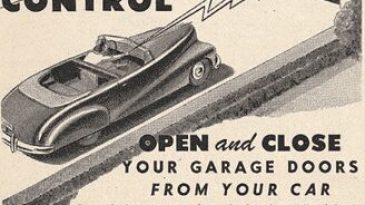
As garage door openers became more common, technological advancements in other areas of life began to influence their development. In the 1980s, the introduction of microprocessors allowed manufacturers to create more sophisticated systems. One of the most notable innovations from this era was rolling code technology. Instead of using a fixed code, rolling code technology generated a new code each time the remote was used. This meant that even if someone intercepted the signal, they couldn’t reuse it to open the garage, making garage door openers far more secure.
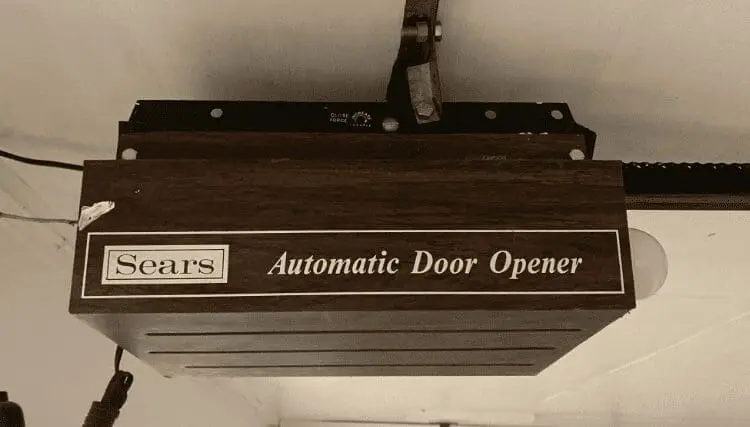
During the 1990s, safety became another major focus. The federal government in the United States passed legislation that required all garage door openers sold after 1993 to include automatic reversal systems. These systems use sensors to detect objects in the door’s path and automatically reverse the door’s direction if something is detected. This was a crucial safety feature that has since prevented numerous accidents and injuries.
This era also saw garage door openers becoming more energy-efficient and quieter. Early models, particularly those using chain-drive systems, were known for their loud operation. However, advances in technology introduced belt-drive systems, which significantly reduced noise and made them more appealing for homes with attached garages.
With the rise of the smart home in the 21st century, garage door openers became part of the broader trend of home automation. The early 2000s saw the introduction of Wi-Fi-enabled garage door openers that could be controlled via smartphone apps. These systems gave homeowners the ability to open and close their garage doors from anywhere in the world, as long as they had an internet connection.
Companies like Chamberlain and LiftMaster led the charge with their MyQ technology, which allowed users to integrate their garage doors with popular smart home platforms like Amazon Alexa, Google Assistant, and Apple HomeKit. This innovation made it possible to open or close your garage door with voice commands or set it to open automatically when you arrived home.
Homeowners no longer had to worry about forgetting to close the garage door, as these systems would send notifications if the door was left open for an extended period. Some models even included geofencing technology, which uses your phone’s location to automatically open or close the door when you are a certain distance from your home.
Another exciting development in this era was the addition of security cameras and motion sensors to garage door openers. Companies like LiftMaster introduced garage door openers with built-in cameras, allowing homeowners to see who was at their garage and even communicate with them remotely. This integration of video and audio capabilities made garage doors a more integral part of home security systems.
Battery backups also became a key feature, particularly in areas prone to power outages. With a battery backup system, homeowners could continue to operate their garage door openers even when the power was out, ensuring they were never stuck outside—or worse, locked inside—their garages.
LiftMaster, another subsidiary of the Chamberlain Group, focuses more on commercial and industrial applications but has also made significant advancements in the residential market. LiftMaster is known for its Smart Garage Control and built-in camera technology, providing extra security features.
Genie is another major player in the garage door opener industry, known for its Aladdin Connect system. Aladdin Connect provides many of the same features as MyQ, allowing homeowners to control their garage doors via a smartphone app. Genie is also known for its Direct Drive models, which are quieter and more energy-efficient than traditional openers.
Sommer focuses on creating high-quality, durable openers. Their Direct Drive technology is unique in that the motor itself travels along the track with the door, making it one of the quietest systems on the market. Sommer’s openers are known for their reliability and energy efficiency.
Craftsman, a well-known brand in the tool industry, also produces high-quality garage door openers. Many of their models are compatible with MyQ technology, and they offer a range of affordable options for homeowners looking for basic functionality without all the bells and whistles.
The future of garage door openers is likely to see even more integration with smart home systems, along with advances in AI and machine learning. As smart homes become more common, garage door openers will need to evolve to keep pace with consumer expectations.
We can expect to see more AI-driven systems that can learn your habits and routines. For example, your garage door opener could automatically open when you leave for your home at a certain time each day, or it might close automatically after detecting inactivity for a specified period.
Voice control will also continue to expand, as many homeowners are already using systems like Amazon Alexa or Google Assistant to control their garage doors. The integration of voice control could become even more intuitive with the use of natural language processing, allowing for more seamless interactions with your garage door.
Additionally, advancements in battery technology will make garage door openers more resilient to power outages. Solar-powered garage door openers are also a possibility, as the push for sustainability grows in the home improvement industry.
The security of garage door openers will continue to be a key focus. We’re likely to see systems that use facial recognition, biometric scanning, or other advanced technologies to provide even more secure access to the home. Integration with advanced home security systems will continue to evolve, giving homeowners more control and peace of mind.
The evolution of garage door openers has been a remarkable journey, transforming a manual, labor-intensive task into an effortless part of our daily routines. From the first overhead doors in the 1920s to today’s smart, Wi-Fi-enabled systems, garage door openers have consistently adapted to new technologies and consumer needs.
As we look to the future, it’s clear that the garage door opener will continue to play an important role in the smart home ecosystem. With innovations in AI, security, and energy efficiency on the horizon, the convenience and safety of garage door openers will only improve in the coming years.
Whether you’re looking for a quiet, energy-efficient opener, advanced security features, or seamless smart home integration, today’s leading brands like Chamberlain, LiftMaster, Genie, and Sommer offer a wide range of options to suit your needs. The evolution of garage door openers is far from over, and we can expect even more exciting advancements in the years to come.

Don't let your garage project, just be a project. Schedule today, and make your garage the centerpiece of your home!

Tired of holding the garage door button just to get it to open or close? Learn the common causes, easy DIY fixes, and when to call Welborn Garage for expert help.
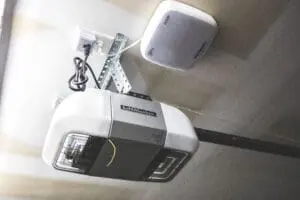
Tired of holding the garage door button just to get it to open or close? Learn the common causes, easy DIY fixes, and when to call Welborn Garage for expert help.

Tired of holding the garage door button just to get it to open or close? Learn the common causes, easy DIY fixes, and when to call Welborn Garage for expert help.